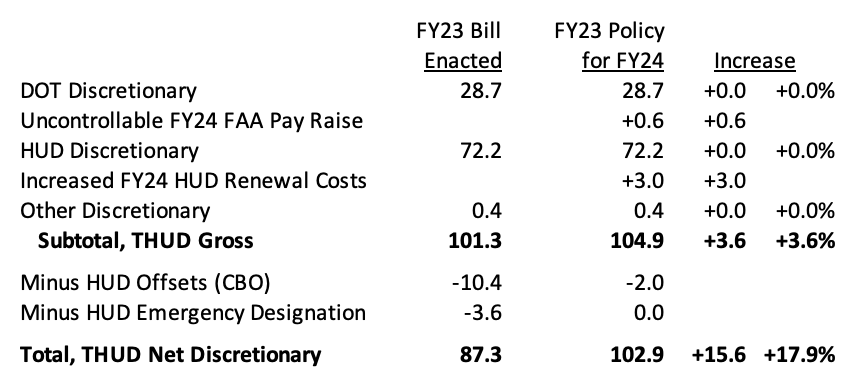The Federal Highway Administration this morning released a funding notice inviting cities, counties, and tribal governments – as well as state governments – to apply for $848 million in competitive grants for projects to increase the resiliency of surface transportation projects to extreme weather. Applications are due by midnight on August 18, 2023.
“Climate change threatens not just our lives and livelihoods, but the infrastructure we rely on every day,” said U.S. Transportation Secretary Pete Buttigieg. “With these grants, we will help ensure that our roads, bridges, and highways are resilient enough to withstand extreme weather, and will create good-paying jobs along the way.”
The new funding is part of the PROTECT program (“Promoting Resilient Operations for Transformative, Efficient, and Cost-Saving Transportation”) which was created by the November 2021 bipartisan infrastructure law (and codified in 23 U.S.C. §176) but which was basically written in July 2019 by the Senate Environment and Public Works Committee in their original highway reauthorization proposal.
The PROTECT program has two parts – a formula-based component that distributes over $1.4 billion per year to the 50 states and the District of Columbia, and the competitive component announced this week. The competitive component receives dedicated funding each year from the Highway Trust Fund but also has received additional appropriations from general revenues in both fiscal 2022 and 2023, as follows:
|
FY22 |
FY23 |
Total |
|
|
|
|
| HTF Contract Authority (Gross) |
250.0 |
250.0 |
500.0 |
| Minus Ob Limit Lop-Off |
-21.8 |
-30.5 |
-52.3 |
| HTF Contract Authority (Net) |
228.3 |
219.5 |
447.8 |
|
|
|
|
| Plus GF Appropriation |
+250.0 |
+150.0 |
+400.0 |
|
|
|
|
| Equals Total for First NOFO |
478.3 |
369.5 |
847.8 |
Eligible applicants. Just about any level of government can apply: States (including D.C. and Puerto Rico) and political subdivisions of states, MPOs, units of local government, port authorities and other special purpose districts or public authorities with transportation functions, Indian tribes, federal land management agencies applying jointly with states, and multi-state or multi-jurisdictional groups of the above. For At-Risk Coastal Infrastructure grants, only coastal states, and entities located in those states, may apply.
Planning grants. On the formula side, each state has to set aside 2 percent of its annual formula apportionment for planning activities. On the competitive side, 5.3 precent of the $848 million ($44.8 million) is set aside for planning grants at a 100 percent federal share. In addition, recipients of capital grants may spend up to 10 percent of those grants on planning activities, albeit at the lower 80 percent federal cost share.
Capital grants. The law breaks capital grants down into three types, listed below along with their shares of the $848 million from this NOFO:
- Resilience improvement grants ($638.4 million): “may be used to improve the ability of an existing surface transportation asset to withstand one or more elements of a weather event or natural disaster, or to increase the resilience of surface transportation infrastructure from the impacts of changing conditions, such as sea level rise, flooding, wildfires, extreme weather events, and other natural disasters.”
- Community resilience and evacuation route grants ($119.8 million): “may be used for activities that strengthen and protect evacuation routes that are essential for providing and supporting evacuations caused by emergency events including activities that will improve evacuation routes, provide safe passage during an evacuation, and reduce the risk of damage to evacuation routes as a result of future emergency events. For routes that inadequately facilitate evacuations, including the transportation of emergency responders and recovery resources, activities include expanding capacity through installation of communication and intelligent transportation system equipment and infrastructure, counterflow measures, or shoulders, in addition to constructing new or redundant evacuation routes, acquiring evacuation route or traffic incident management equipment or signage, or ensuring access or service to critical destinations, including hospitals and other medical or emergency services facilities, major employers, critical manufacturing centers, ports and intermodal facilities, utilities, and Federal facilities.”
- At-risk coastal infrastructure grants ($44.8 million): “may be used for activities to strengthen, stabilize, harden, elevate, relocate or otherwise enhance the resilience of highway and non-rail infrastructure, including: bridges, roads, pedestrian walkways, and bicycle lanes, and associated infrastructure, such as culverts and tide gates to protect highways that are subject to, or face increased long-term future risks of, a weather event, a natural disaster, or changing conditions, including coastal flooding, coastal erosion, wave action, storm surge, or sea level rise, in order to improve transportation and public safety and to reduce costs by avoiding larger future maintenance or rebuilding costs.”
The calculations of those dollar amounts are below.




